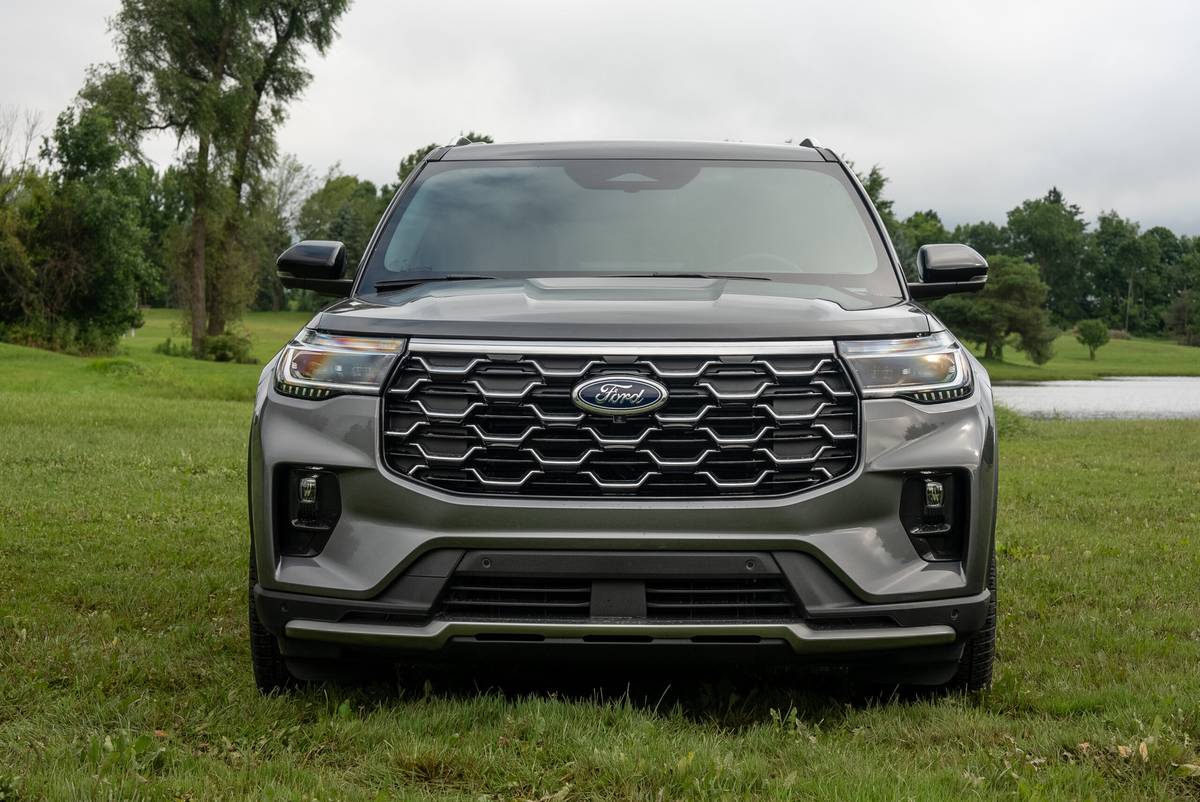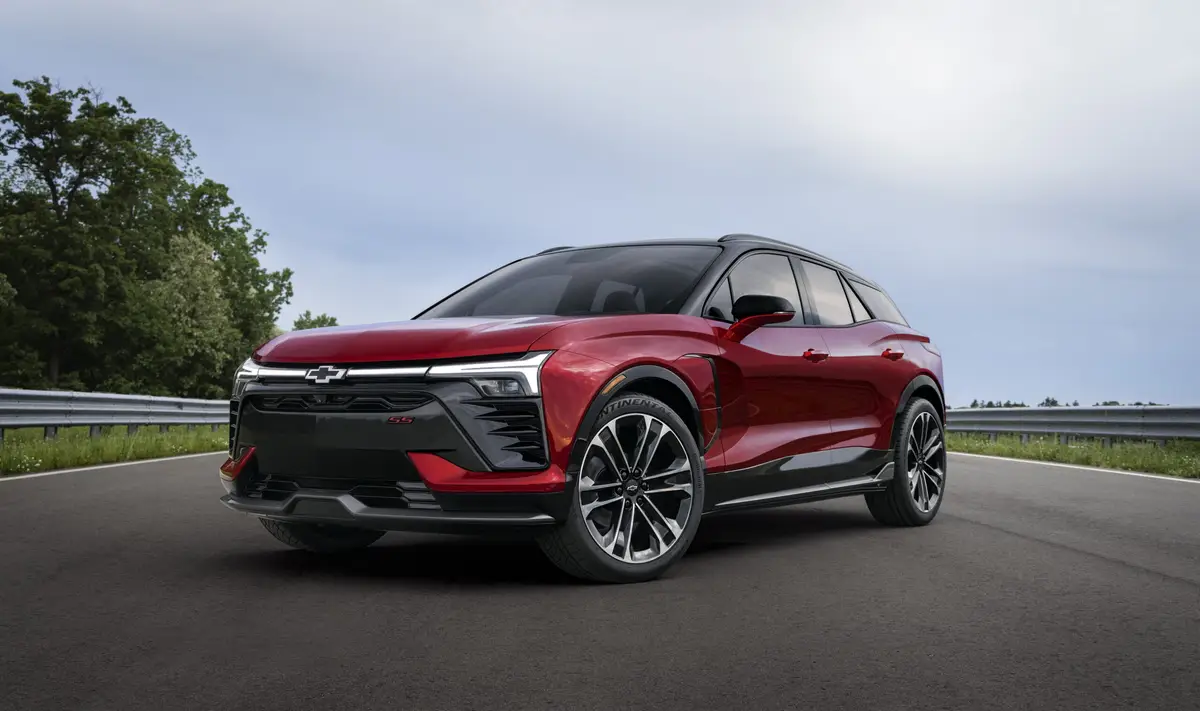2005 Chrysler 300C: What's New
Vehicle Overview
Chrysler has marketed automobiles under the “300” designation off and on for half a century. The 300 series premiered in 1955 with a high-performance hardtop coupe that held a 300-horsepower Hemi V-8 engine. In its 1999 to 2004 iteration, the Chrysler 300M was a front-drive sedan with V-6 power.
A completely different line of 300 sedans has joined Chrysler’s lineup for 2005, taking the place of both the 300M and the Concorde. Instead of front-drive, like all Chrysler passenger cars have had since 1990, the new 300 has rear-wheel drive. V-6 power is standard in the 2005 sedan, but it can also be fitted with Chrysler’s hot Hemi V-8 engine, making it the 300C. An innovative Multi-Displacement System automatically shuts down half of the Hemi’s cylinders when the car is cruising easily, under light load. The system shuts off both valves for unused cylinders, which Chrysler says can yield a 10 to 20 percent improvement in fuel economy.
To counteract concerns that the rear-drive 300C won’t handle properly on snow and ice, Chrysler has installed an Electronic Stability Program. An all-wheel-drive version will be added near the end of 2004.
A high-performance SRT8 edition equipped with a 425-hp Hemi V-8 is scheduled to go on sale in spring 2005.
Exterior
Flaunting a completely new shape, the 300C looks bold and imposing. Senior design manager Mark Hall calls the sedan’s proportions classic and its appearance “noble and upscale,” led by a prominent, low-positioned crosshatch grille. “This vehicle has presence,” Hall said, referring to belt moldings “nestled down into the sheet metal.”
Aluminum is used for the hood and decklid. Built on a 120-inch wheelbase, the 300C is almost 2 inches taller than the 300M it replaces. Sizable wheel openings encircle 18-inch tires that are mounted on chrome-clad aluminum wheels. High-intensity-discharge headlights are optional.
Interior
Though the 300C is shorter overall than the 300M, the new five-passenger sedan is larger inside. The instruments have a watch-face style, and 300C drivers get a steering wheel with leather and tortoise shell-style accents. The new, gated gearshift has a leather- and chrome-accented knob. Trunk volume totals 15.6 cubic feet.
The 300C’s standard features include a power tilt and telescope steering wheel with a memory feature, premium leather trim, rain-sensitive wipers, and heated mirrors with a memory feature. Two Boston Acoustics audio systems and rear parking assist are available in equipment groups.
Under the Hood
In the 300C, Chrysler’s 340-hp, 5.7-liter Hemi V-8 produces 390 pounds-feet of torque and drives a five-speed-automatic transmission that incorporates AutoStick for manually selected gear changes. The 300C has a dual exhaust system.
Safety
Antilock brakes, traction control and an Electronic Stability Program are standard on the 300C. Side curtain-type airbags are optional.
Driving Impressions
From the first moments behind the wheel, each 300 sedan comes across as especially solid and substantial. The V-6 versions deliver adequate power but little more, especially on mountain grades.
If the Touring sedan ranks as excellent, then the 300C warrants a superior rating. Though supremely quiet most of the time, the Hemi V-8 delivers a satisfying note when accelerating hard.
Steering and stability feel even more certain and secure in the 300C compared with the Touring. The 300C takes winding mountain roads even more confidently. Engine response is virtually immediate, and passing and merging reactions are seriously energetic. Better yet, the five-speed-automatic transmission is near-perfect. You hardly feel the gear changes, even when shifting manually, which is especially easy to do; just tap the lever left or right while the car is in Drive.
Snow and ice performance with the Electronic Stability Program is amazing. Even if you tromp the gas on a snow-packed curve, the system kicks in immediately to keep the car on course. On the downside, you might feel the system has taken over too assertively.
Seats are reasonably supportive and invitingly comfortable, though a bit on the hard side. Long seat bottoms are pleasing, though they do tilt forward a bit. Abundant glass area helps visibility, as do the car’s large mirrors. Gauges look interesting, and the high trip odometer is unusually easy to read. Backseat space is abundant, promising plenty of legroom and an acceptable amount of headroom. The trunk is slightly narrowed, but deep.
Featured stories



